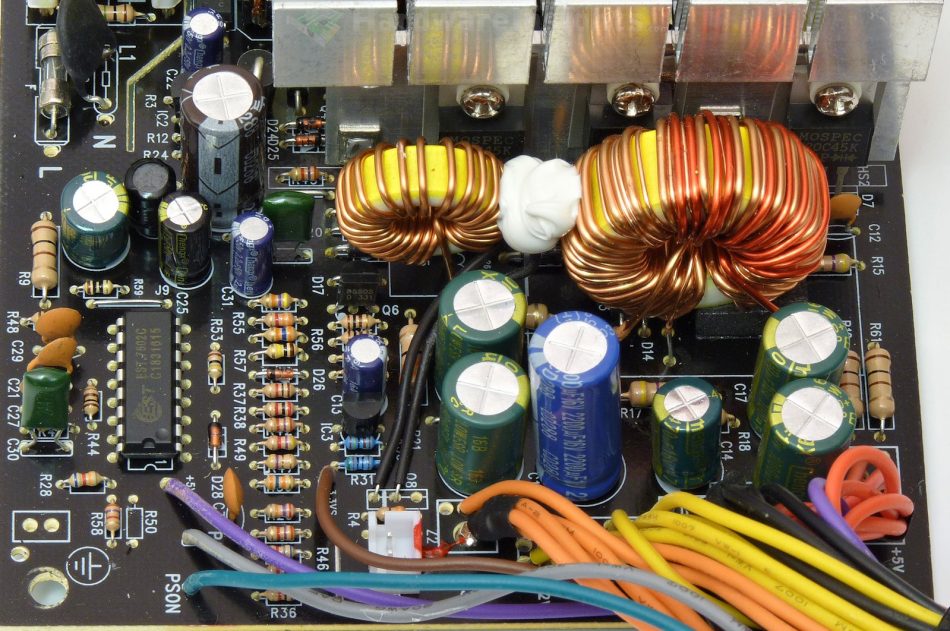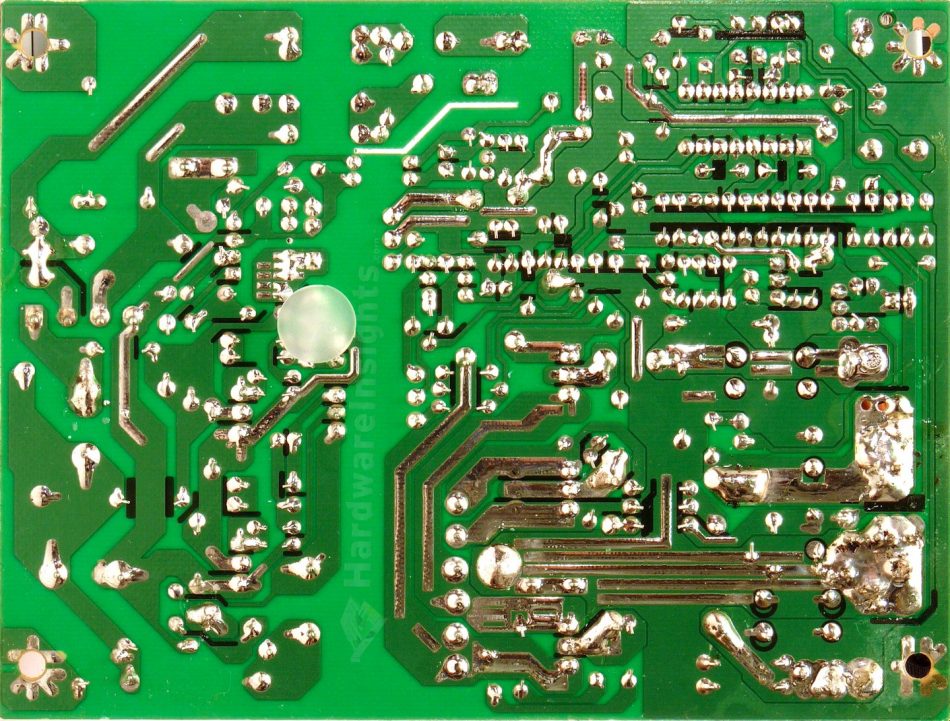Contents
- 1Introducing the Crono PS350N
- 1.1Packaging and accessories
- 2Connectors & cabling
- 2.1Casing & cooling
- 3Input filtering
- 4Primary side
- 4.1+5 V stand-by rail
- 5Secondary side
- 5.1Build quality
- 6Load testing
- 6.1Loading +5 V SB
- 6.2Hold-up time
- 6.3Combined loading
- 6.4Combined loading ripple
- 6.5Crossloading, overloading
- 6.6Crossloading, overloading ripple
- 6.7Fan speed, temperatures and noise
- 7Conclusion and evaluation
- 7.1Thanks
- 7.2Discussion
Secondary side
The secondary side of the PS350N uses standard set: Schottky rectifiers for +5 V and +3.3 V rails and most likely fast recovery for +12 V. I could not find a datasheet for the “20F020” +12V rectifier but I would guess it is some clone of 20 A/200 V ultrafast. The +3.3 V is generated from +5 V winding using magnetic amplifier, the −12 V from +12V transformer tap. The rectifiers for both minor positive rails are (allegedly) MOSPEC S20C45K (20/200 A at 45 V, drop of 0.45 V at 10 A and 100 °C, 0.55 V at 25 °C) in TO-220 package, but the absence of a definition for the K (it should be C for a common-cathode rectifier; other options listed are A for common-anode and D for a series pair) casts doubt on their integrity. Everything shares a heatsink similar in size to the primary one.
It has no Pi coils, just some capacitors. And there is actually only one on the +12V rail, this is going to be interesting. The fan controller – if we can even call it that – consists of thermistor glued by silicone between the +3.3 and the +5/+12V common inductor. It is then connected in series with the fan between +12 V and common. Notice R50 which has been cut out – this is voltage “calibration” I guess.
Build quality
As usual, I’ll focus on the overall build quality and other things like electrical safety here, as the quality of the components that were used was already discussed before. The separation between the primary and secondary sides is good, there is even some extra creepage slot between the input filtering and the secondary side. The thermistor is not sleeved with heatshrink. There is also a plastic spacer to support the board, though it is not that heavy. The manufacturer, whoever it is, used proper silicone, not a chloroprene glue. Yay!
Some of the electrodes are not trimmed short. The soldering is not that bad, there are even some reinforced paths. Though everything which has been then soldered by hand has soldering flux all around. There were two big solder balls (one of them on primary, just next to input capacitor, visible even on the image) and one smaller one. Otherwise it seems OK. The board is nice for the price and comes from Shandong Jinbao Electronics. I guess the black component side of the board might help cooling as the efficiency of the PS350N will be poor.



